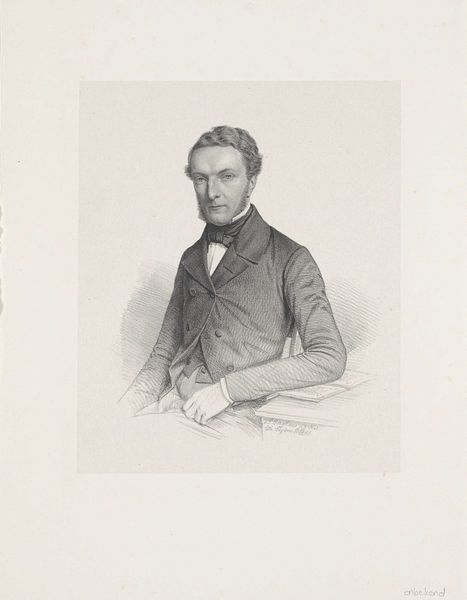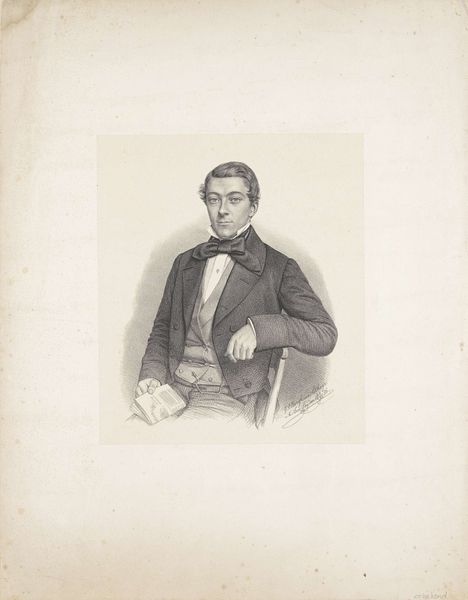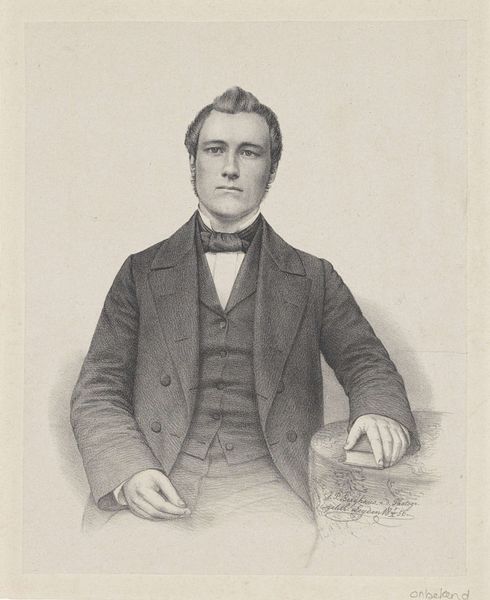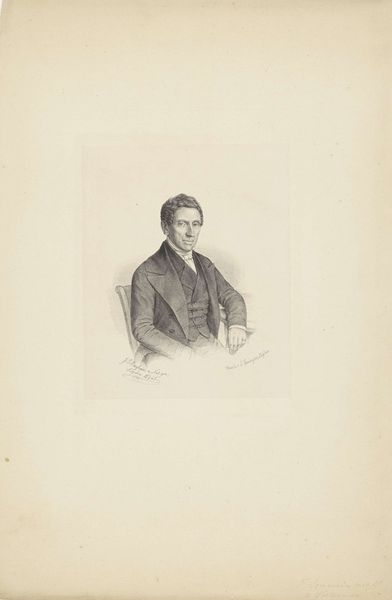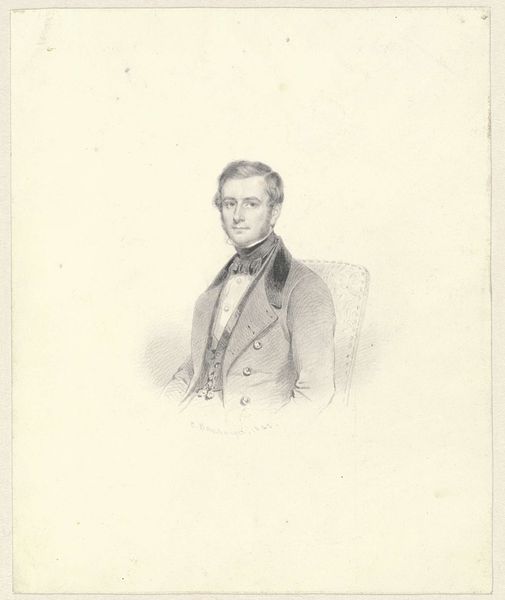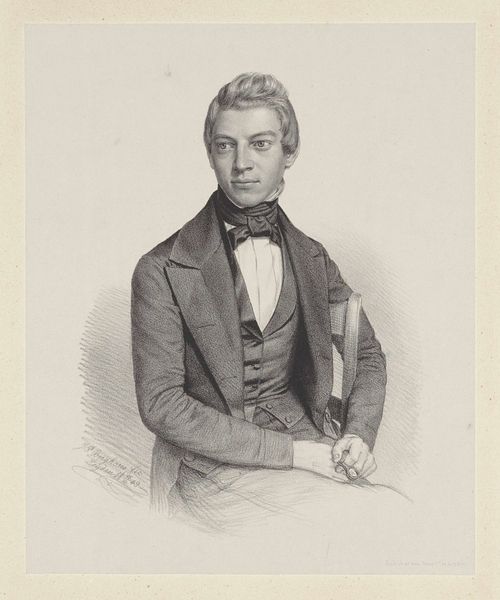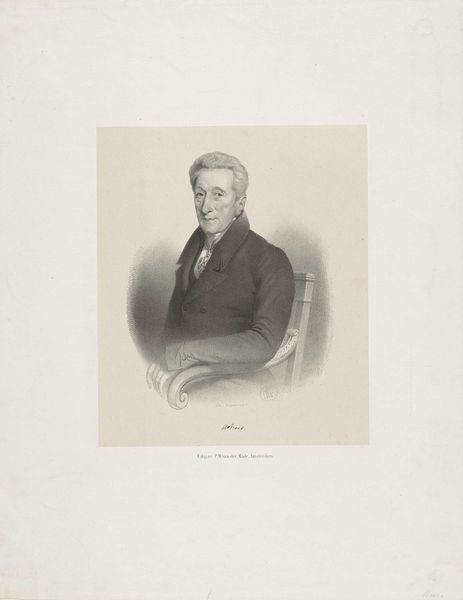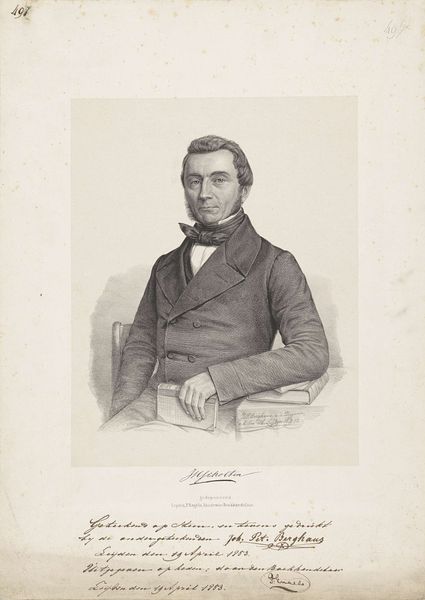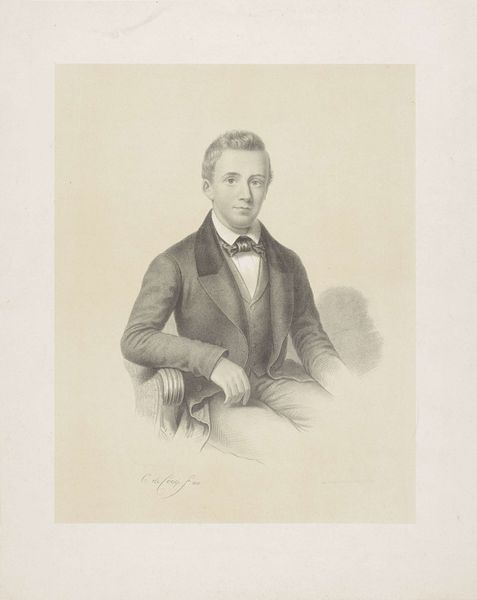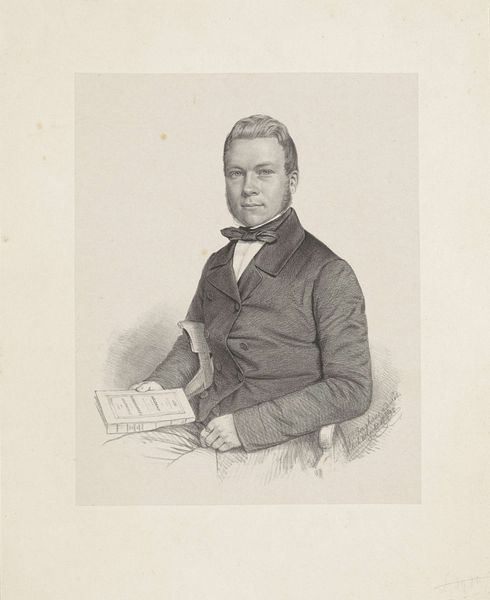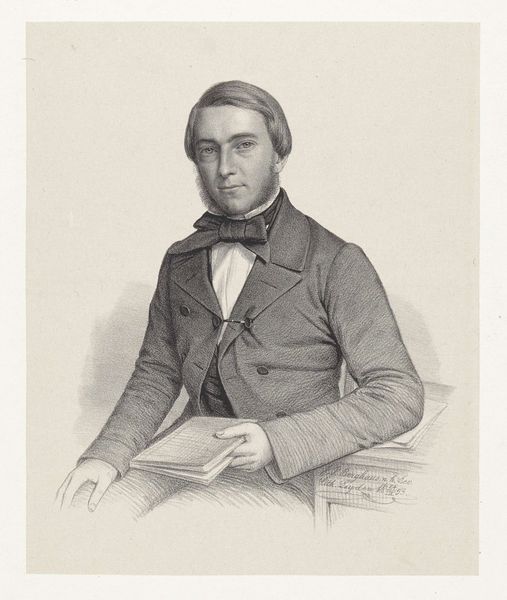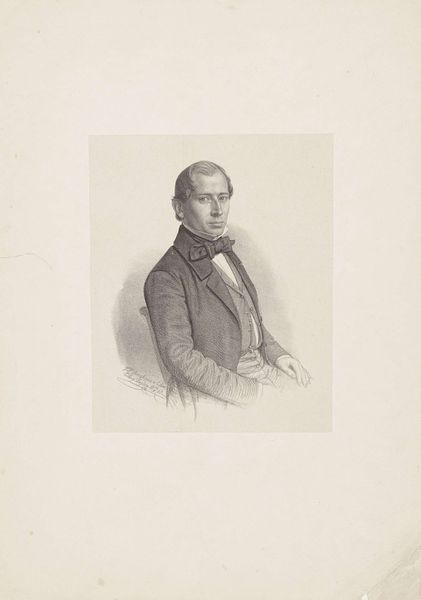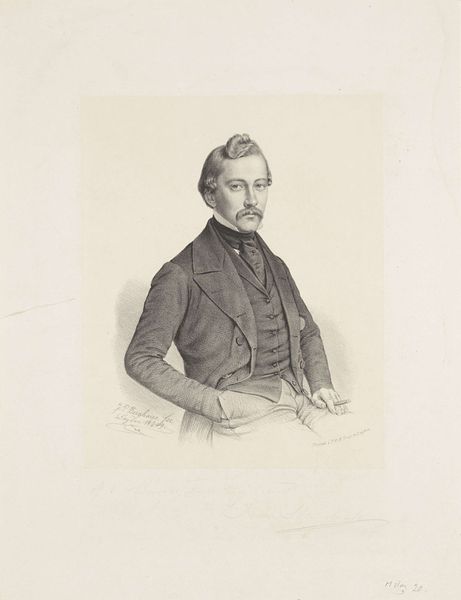
drawing, pencil, graphite
#
pencil drawn
#
drawing
#
pencil sketch
#
charcoal drawing
#
pencil drawing
#
pencil
#
graphite
#
portrait drawing
#
graphite
#
realism
Dimensions: height 385 mm, width 285 mm
Copyright: Rijks Museum: Open Domain
Editor: This is "Portrait of Leonardus Johanna de Roock," likely from 1848, by Johann Peter Berghaus. It’s a pencil drawing, and it strikes me as conveying a certain bourgeois sensibility. What stands out to you when you look at this portrait? Curator: Immediately, I think of the social context. The mid-19th century saw rising middle classes, and portraiture shifted from solely representing aristocracy. This image becomes a statement about class and perhaps even aspiration. Notice how Berghaus uses graphite to capture the details of de Roock’s attire. The materiality speaks to ideas of gender performance and identity during this period. It makes me wonder: what other narratives could this image reveal about constructions of masculinity in 19th century Netherlands? Editor: So you're suggesting that something as simple as the detailed drawing of his clothing can tell us a lot about social hierarchies at the time? Curator: Precisely. Berghaus’ choice of medium also speaks volumes, the accessibility of pencil drawing allows for a democratisation of portraiture but the fine details maintains an air of sophistication. It invites us to analyse the intersection of class, gender, and artistic technique. What do you think that the gaze of the subject tells us? Does his eye contact, or lack thereof, say something? Editor: I hadn't thought of it that way, but I can definitely see that now! He's not looking at us, but off to the side, perhaps towards a better future for himself? Curator: Yes, a “better” future, seen through the eyes of the aspirational bourgeois. Analyzing these portraits through such theoretical lenses challenges traditional art historical narratives. It unveils the layers of meaning embedded within seemingly simple representations. Editor: This has really changed how I view portraiture. I’m now wondering about the unseen stories within other portraits. Curator: Exactly! By considering these intersectional elements, we create a richer and more inclusive understanding of art and history.
Comments
No comments
Be the first to comment and join the conversation on the ultimate creative platform.
